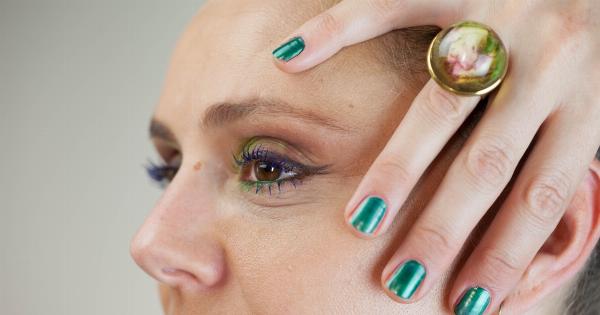Eye barley, also known as a stye or hordeolum, is a common eye condition that affects many individuals. It appears as a small red bump on the eyelid, usually caused by a bacterial infection.
Although eye barley is typically harmless and self-limiting, it can cause discomfort and irritation. In this article, we will explore the diagnosis and treatment options for eye barley, helping you better understand this condition and how to manage it effectively.
What Causes Eye Barley?
Eye barley is most commonly caused by a bacterial infection. The bacteria known as Staphylococcus aureus is often the culprit. These bacteria reside on the skin and can enter the eyelid through small hair follicles or oil glands, leading to an infection.
Poor eyelid hygiene, such as failing to remove makeup properly or not washing your hands before touching your eyes, can increase the risk of developing eye barley.
Symptoms of Eye Barley
The symptoms of eye barley are fairly characteristic, making it relatively easy to identify. The most common signs and symptoms include:.
- A small, red bump on the eyelid
- Swelling and tenderness around the affected area
- A sensation of grittiness or foreign body presence in the eye
- Discomfort or pain when blinking
- Excessive tearing
- Crusting of the eyelid or lashes
- Blurred vision (in rare cases)
Diagnosing Eye Barley
Typically, a healthcare professional can diagnose eye barley through a physical examination, based on the characteristic signs and symptoms. They may use a magnifying instrument called a slit lamp to examine the affected area closely.
In some cases, a swab culture may be taken to determine the specific bacteria causing the infection, especially if the condition is persistent or recurrent.
Treatment Options for Eye Barley
Fortunately, most cases of eye barley resolve on their own within one to two weeks, even without treatment. However, there are several measures you can take to speed up the healing process and alleviate symptoms:.
- Warm Compresses: Applying warm compresses to the affected area several times a day can help reduce swelling and promote drainage. Soak a clean cloth in warm water and gently hold it against your closed eyelid for around 10-15 minutes.
- Good Eyelid Hygiene: Proper eyelid hygiene is crucial for preventing and managing eye barley. Cleanse your eyelids using a gentle cleanser or baby shampoo diluted with water. Use a clean cotton bud or pad to gently scrub along the lash line to remove any debris or crusting.
- Avoid Eye Makeup and Contact Lenses: It is advisable to avoid wearing eye makeup and contact lenses until the infection clears. This helps prevent further irritation and contamination.
- Pain Relief Medications: Over-the-counter pain relief medications, such as acetaminophen or ibuprofen, can help alleviate any pain or discomfort associated with eye barley. However, consult your doctor or pharmacist before taking any medications.
- Avoid Eye Rubbing: Refrain from touching or rubbing your eyes, as this can worsen the inflammation and spread the infection to other parts of the eye.
When to Seek Medical Attention
In most cases, eye barley resolves on its own without medical intervention. However, it is essential to seek medical attention if:.
- The condition worsens or does not improve within a few weeks
- The swelling becomes severe and affects your vision
- There is a recurrence of eye barley
- You develop a fever or other systemic symptoms
Your healthcare provider may prescribe antibiotic ointment or eye drops if the infection is severe or recurrent. In rare cases, they may recommend incision and drainage of the stye in the office to expedite healing.
Preventing Eye Barley
While it may not be possible to prevent eye barley entirely, there are measures you can take to reduce your risk:.
- Maintain good hand hygiene by washing your hands regularly and thoroughly.
- Avoid touching or rubbing your eyes with dirty hands.
- Remove makeup before going to bed using gentle cleansers.
- Keep your contact lenses and associated materials clean and disinfected.
- Avoid sharing eye cosmetics or personal eye care items with others.
- Replace eye makeup regularly to prevent bacterial contamination.
By following these preventive measures, you can significantly lower the chances of developing eye barley.
Conclusion
Eye barley, or a stye, is a common and often harmless eye condition caused by a bacterial infection. It typically resolves on its own within a couple of weeks, but proper management and self-care can help alleviate symptoms and promote faster healing.
Remember to maintain good eyelid hygiene, avoid touching your eyes with dirty hands, and seek medical attention if the condition worsens or becomes recurrent. By understanding eye barley and its treatment options, you can take proactive steps to protect your eye health.





























